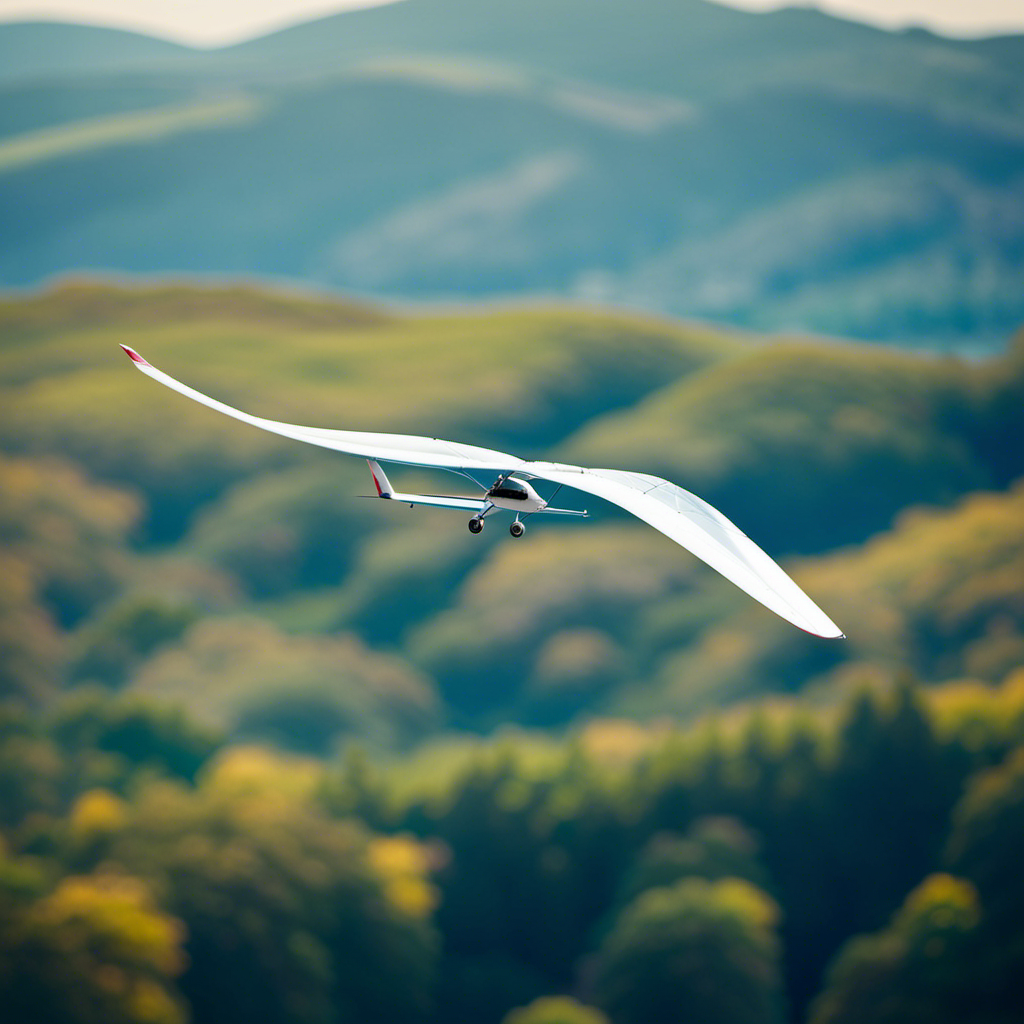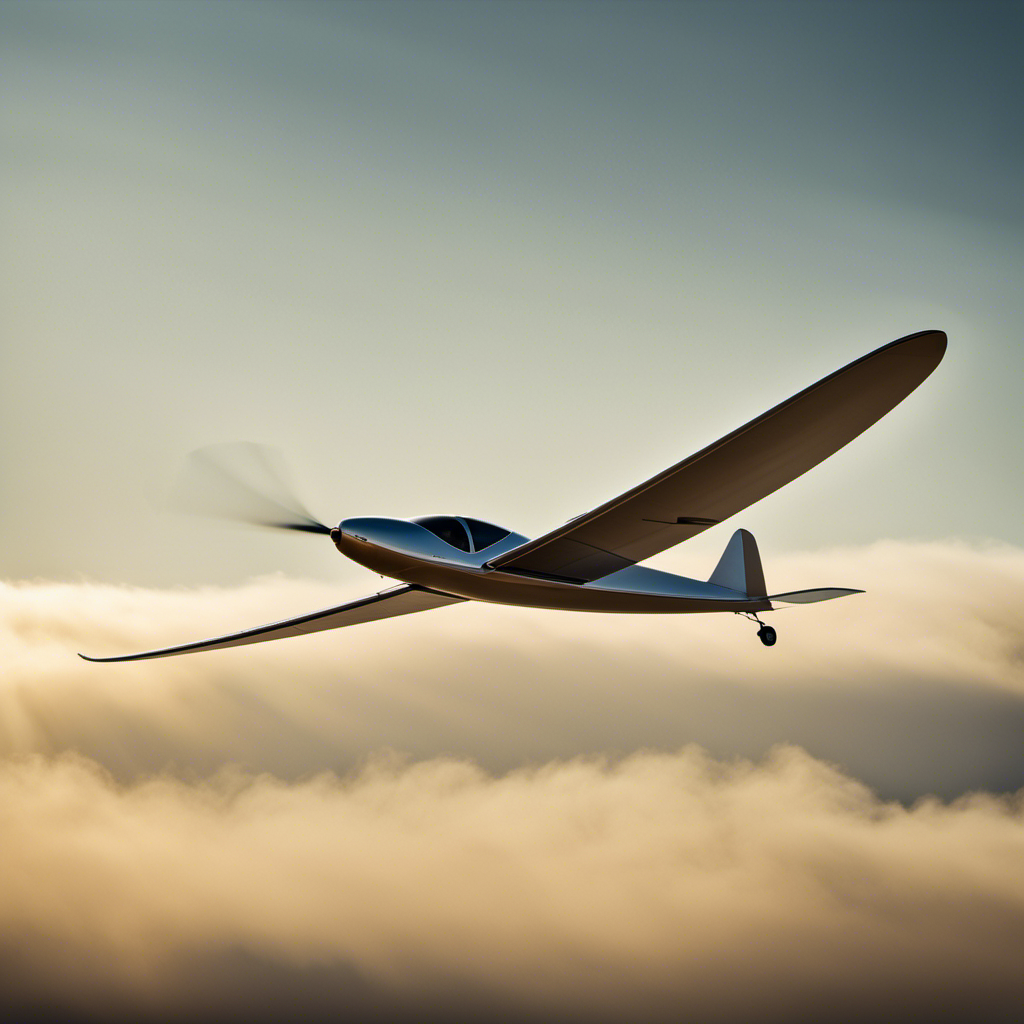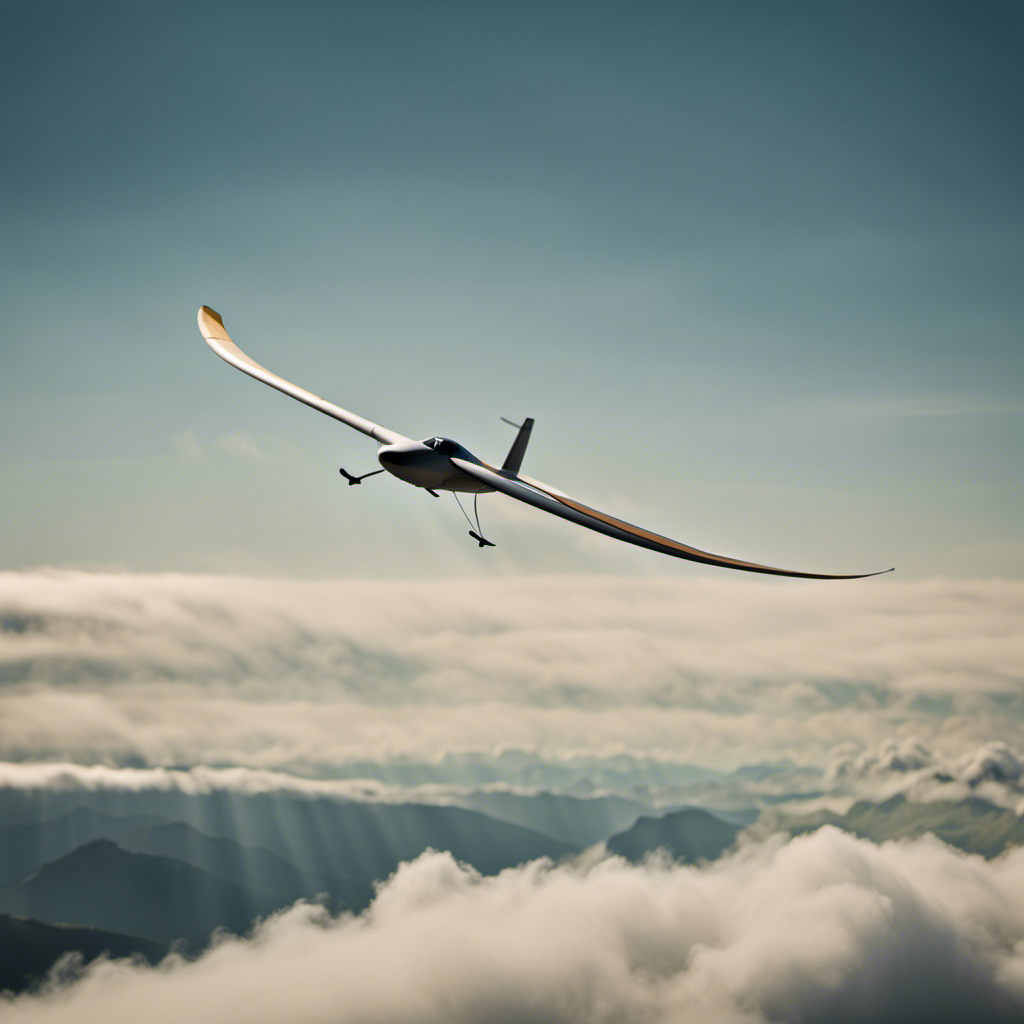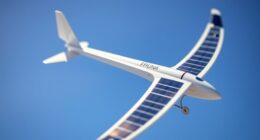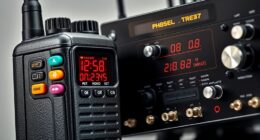As a glider pilot, I have experienced firsthand the thrill and challenges of soaring through the sky. It is important to strike a careful balance with the wind to ensure a safe and enjoyable flight.
So, how windy is too windy for gliding? In this article, we’ll delve into the technicalities of wind speed, direction, and gusts, exploring the factors that determine the maximum limit for safe gliding.
Join me as we navigate the risks and rewards of flying in strong winds, and learn how to master the art of handling windy conditions.
Key Takeaways
- Wind speed impacts glide performance, with poor performance and the need to land safely in winds of 16+ knots.
- Proper wind management is crucial for maximizing performance and safety in gliding.
- Weather forecasting and monitoring are important for assessing the safety of flying and planning flight paths effectively.
- Experience and skill in handling windy conditions are essential for anticipating and reacting to gusts or turbulence.
Understanding Wind Speed and its Impact on Gliding
You should know that wind speed plays a crucial role in determining whether it’s safe for you to go gliding. Understanding wind speed limits is essential for any glider pilot.
The maximum allowable wind speed for gliding varies depending on the specific aircraft and pilot experience. Generally, wind speeds above 25 knots are considered too strong for gliding. Strong winds can create turbulent conditions and increase the risk of accidents.
Wind shear effects, caused by sudden changes in wind direction or speed, can be particularly dangerous during takeoff and landing. It’s important to monitor wind speed and be aware of any potential wind shear effects before embarking on a gliding adventure.
Now, let’s explore the importance of wind direction and gusts in gliding.
The Importance of Wind Direction and Gusts in Gliding
The direction and strength of the wind, as well as any sudden bursts of air, play a crucial role in the sport of gliding. In windy conditions, understanding wind direction is essential for maintaining control and ensuring gliding safety. When the wind blows parallel to the direction of the runway, it creates ideal conditions for takeoff and landing.
However, if the wind is blowing across the runway, it can cause significant challenges and increase the risk of accidents. Additionally, sudden gusts of wind can affect the stability of the glider, making it difficult for the pilot to maintain control. Therefore, pilots must constantly monitor wind direction and be prepared to adjust their flight plans accordingly.
Transitioning into the subsequent section about factors that determine the maximum wind speed for gliding, it is important to consider the impact of wind direction and gusts on these factors.
Factors that Determine the Maximum Wind Speed for Gliding
Understanding wind direction and gust impact is crucial in determining the maximum wind speed for gliding. As a glider pilot, I rely on these factors to ensure a safe and controlled flight.
When considering the maximum wind speed for gliding, two main factors come into play:
-
Wind direction: The direction from which the wind is blowing affects the aerodynamics of the glider. A headwind can increase lift and allow for longer flights, while a tailwind can decrease lift and make landing more challenging.
-
Gust impact: Gusts are sudden changes in wind speed and direction. They can have a significant impact on gliding performance, causing turbulence and making the aircraft difficult to control. It is important to consider the strength and frequency of gusts when determining the maximum wind speed for gliding.
Safety Precautions for Windy Conditions in Gliding
To ensure a safe flight in challenging conditions, be sure to take necessary precautions when gliding in windy weather. Windy conditions can present significant risks to gliding safety, so it is crucial to be well-prepared.
Firstly, always check the weather forecast and wind speed before heading out. If the wind is too strong, it may be best to postpone your flight. When flying in windy conditions, ensure that you have a firm grip on the controls and maintain a stable gliding speed. Keep a vigilant eye on the wind direction and be prepared for sudden gusts or turbulence.
Furthermore, make sure to adjust your flight plan accordingly and avoid areas with potential wind shear or strong crosswinds. By following these precautions, you can enhance your gliding safety and enjoy a smooth flight even in windy conditions.
Flying in strong winds brings its own set of risks and challenges.
The Risks and Challenges of Flying in Strong Winds
When flying in strong winds, it is crucial to be aware of the risks and challenges they present. Understanding the potential dangers and difficulties that can arise in these conditions is essential. Here are the key points to consider:
-
Turbulence: Strong winds can create turbulent air pockets, making the aircraft unstable and harder to control.
-
Wind shear: Sudden changes in wind speed and direction can lead to wind shear, causing unexpected shifts in the aircraft’s position.
-
Reduced maneuverability: Flying in strong winds requires more effort and skill, as the wind can limit the aircraft’s ability to turn and maneuver effectively.
These risks and challenges highlight the importance of thorough preparation and skillful piloting when facing windy conditions. Understanding how windy conditions can affect gliding performance is crucial for ensuring a safe and successful flight.
How Windy Conditions Can Affect Gliding Performance
After understanding the risks and challenges associated with flying in strong winds, it is crucial to delve into how windy conditions can impact gliding performance.
When it comes to gliding, wind plays a significant role in the aircraft’s ability to maintain altitude and maneuver efficiently.
In windy conditions, the glider’s performance can be greatly affected, both positively and negatively. Tailwinds, for instance, can increase the groundspeed of the glider, allowing it to cover more distance in a shorter period. Conversely, headwinds can reduce the groundspeed, making it more challenging to maintain altitude and complete tasks efficiently.
Crosswinds, on the other hand, require precise control inputs to counteract the aircraft’s tendency to drift off course.
Understanding these effects and adapting techniques for handling windy conditions in gliding is essential for maintaining control and ensuring a safe flight.
Techniques for Handling Windy Conditions in Gliding
You can improve your ability to handle windy conditions in gliding by practicing precise control inputs to counteract crosswinds. Windy conditions pose unique challenges in gliding, requiring pilots to employ specific techniques to maintain control and safety. By mastering these gliding techniques, pilots can navigate through gusty winds with confidence. One effective technique is the use of aileron and rudder inputs to counteract crosswinds, ensuring the glider remains aligned with the desired flight path. Additionally, adjusting the airspeed and adopting the correct bank angle can help maintain stability and control in windy conditions. To further emphasize these techniques, consider the following table:
| Technique | Description | Benefits |
|---|---|---|
| Aileron and Rudder Inputs | Precise control inputs to counteract crosswinds | Maintains alignment with flight path |
| Adjusting Airspeed | Modifying speed to maintain stability | Improves control in gusty winds |
| Correct Bank Angle | Adopting the appropriate bank angle | Enhances stability and control |
These techniques, when practiced consistently, will significantly improve your ability to handle windy conditions in gliding. As we delve into the role of experience and skill in windy gliding, it becomes evident that these techniques are just the beginning of mastering the challenges of flying in turbulent winds.
The Role of Experience and Skill in Windy Gliding
Mastering the techniques for handling windy conditions in gliding requires experience and skill. When it comes to windy gliding performance, both experience and skill play vital roles.
Experience allows a pilot to develop a deep understanding of how different wind speeds and directions affect the glider’s behavior. It enables them to anticipate and react to sudden gusts or turbulence.
On the other hand, skill is the ability to apply that knowledge effectively and make precise adjustments to control surfaces. It involves fine-tuning the glider’s pitch, roll, and yaw to maintain stability and optimize performance in windy conditions.
While experience provides the foundation, skill takes it to the next level, allowing pilots to navigate safely and efficiently through challenging wind conditions. By harnessing both experience and skill, pilots can maximize their performance and improve their overall gliding experience.
As pilots, we must also consider weather forecasting and monitoring for gliding safety.
Weather Forecasting and Monitoring for Gliding Safety
Weather forecasting and monitoring are essential for ensuring the safety of gliding operations. As a pilot, I rely on accurate weather forecasts and real-time wind monitoring to make informed decisions before taking off. Here are three reasons why weather forecasting and wind monitoring are crucial in gliding:
-
Safety: Weather forecasting allows me to assess the current and future weather conditions, including wind speed and direction. This information helps me determine if it’s safe to fly and avoid potentially dangerous situations.
-
Efficiency: By monitoring the wind patterns, I can identify favorable conditions for gliding, such as thermal activity or ridge lift. This knowledge allows me to plan my flight path more effectively and maximize my gliding distance.
-
Decision-making: Weather forecasts and wind monitoring enable me to make informed decisions during the flight. If the wind conditions change unexpectedly, I can adjust my route or altitude accordingly to ensure a safe and smooth gliding experience.
Understanding the importance of weather forecasting and wind monitoring sets the foundation for discussing the benefits of proper wind management in gliding.
The Benefits of Proper Wind Management in Gliding
When properly managed, wind conditions can greatly enhance your gliding experience. By utilizing effective wind management techniques, you can maximize your performance and safety while soaring through the skies. Understanding how to work with the wind can make a significant difference in your overall gliding experience.
One key aspect of wind management is knowing how to interpret and utilize wind forecasts. By studying weather patterns and monitoring wind speeds, you can plan your flights accordingly and choose the most favorable conditions for gliding. Additionally, adjusting your flight path and altitude based on wind direction and intensity can help optimize your glide performance.
To illustrate the importance of wind management, consider the following table:
| Wind Speed (knots) | Glide Performance | Recommended Action |
|---|---|---|
| 0-5 | Excellent | Maintain course |
| 6-10 | Good | Adjust altitude |
| 11-15 | Fair | Modify flight path |
| 16+ | Poor | Land safely |
Frequently Asked Questions
How does wind speed affect the lift generated by a glider?
Wind speed directly affects the lift generated by a glider. Higher wind speeds create more lift, allowing the glider to stay aloft. However, excessively high wind speeds can lead to dangerous conditions for gliding.
Can wind direction change during a gliding flight and how does it impact the pilot’s control?
Wind direction changes during a gliding flight can significantly impact a pilot’s control. Sudden shifts in wind direction can cause the glider to veer off course or experience turbulence, requiring the pilot to make adjustments to maintain control and stay on track.
Are there any specific wind gust thresholds that gliders should be aware of?
Wind gust thresholds for gliders depend on the aircraft’s design and pilot’s experience. However, it’s important to note that wind speed impacts gliding more than gusts. Pilots must be aware of their glider’s limitations and exercise caution in high wind conditions.
What safety precautions should be taken when flying in windy conditions?
When flying in windy conditions, it is important to follow emergency procedures and be vigilant for wind shear. This includes maintaining proper control of the aircraft and being prepared to react quickly to any sudden changes in wind direction or speed.
How do strong winds affect the flight path and maneuverability of a glider?
In windy conditions, glider performance is drastically affected. The impact of wind on glider aerodynamics can cause turbulence, making it difficult to maintain a stable flight path and maneuverability.
Conclusion
In conclusion, the truth behind the theory of wind speed and gliding is crucial for the safety and success of every glider pilot.
Understanding the impact of wind direction, gusts, and other factors is essential in determining the maximum wind speed for gliding.
Proper safety precautions, handling techniques, and experience play a significant role in navigating windy conditions.
By utilizing weather forecasting and monitoring, pilots can effectively manage wind in gliding, ensuring a smooth and enjoyable flight.
Mastering wind management is key to unlocking the full potential of gliding.
